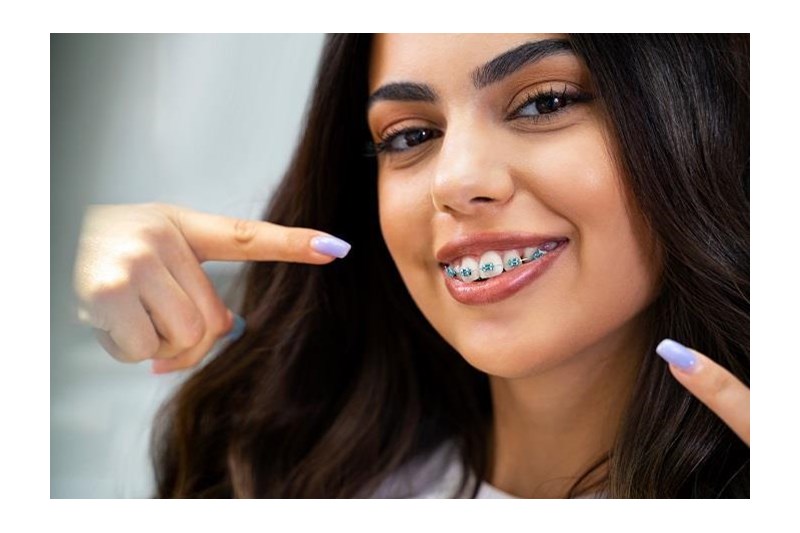Virtual jaw AI tool developed to improve the fit of braces
Published: 15/03/2024
A tool being developed by the University of Copenhagen (UCPH) and 3Shape will help orthodontists correctly fit braces onto teeth. Using artificial intelligence and virtual patients, the tool predicts how teeth will move to ensure that braces are neither too loose nor too tight.
The tool has been developed with the help of scanned imagery of teeth and bone structures from human jaws, which artificial intelligence then uses to predict how sets of braces should be designed to best straighten a patient’s teeth.
Every year, about 30 per cent of Danish youth up to the age of 15 wear braces to align crooked teeth. Orthodontists use the knowledge gained from their education and experience to perform their jobs, but without the possibility that a computer can provide for predicting final results.
Developed in collaboration with the University of Copenhagen’s Department of Computer Science and 3Shape, the new tool simulates how braces should fit to give the best result without too many unnecessary inconveniences.
Kenny Erleben, a professor and head of a research section at UCPH’s Department of Computer Science, said, "Our simulation is able to let an orthodontist know where braces should and shouldn’t exert pressure to straighten teeth. Currently, these interventions are based entirely upon the discretion of orthodontists and involve a great deal of trial and error. This can lead to many adjustments and visits to the orthodontist’s office, which our simulation can help reduce in the long run."
Helps predict tooth movement
Teeth continually shift slightly throughout a person’s life, and these movements are very different from mouth to mouth.
"The fact that tooth movements vary from one patient to another makes it even more challenging to accurately predict how teeth will move for different people. Which is why we’ve developed a new tool and a dataset of different models to help overcome these challenges," explained Torkan Gholamalizadeh, from 3Shape and a PhD from the Department of Computer Science.
Aligners have gained ground as an alternative to the classic bracket and braces. They are designed as transparent plastic casts of the teeth that patients fit over their teeth.
Patients must wear aligners for at least 22 hours a day, and they need to be swapped for new and tighter sets every two weeks. Because aligners are made of plastic, a person’s teeth also change the contours of the aligner itself, something that the new tool also takes into account.
"As transparent aligners are softer than metal braces, calculating how much force it takes to move the teeth becomes even more complicated. But it’s a factor that we’ve taught our model to take into account so that one can predict tooth movements when using aligners as well," said Torkan.
Digital twins
A digital twin is a virtual model that lives in the cloud and is designed to accurately mirror a human being, physical object, system, or real-world process.
Kenny explained, "The virtual model can answer what's happening in the real world, and do so instantly. For example, one can ask what would happen if you pushed on one tooth and get answers with regards to where it would move and how it would affect other teeth. This can be done quickly, so that you know what's happening. Today, weeks must pass before finding out whether a desired effect has been achieved.”
Digital twins can be used to plan, design and optimise. One goal of working with digital twins at the Department of Computer Science is to create simulations of populations, for example, in the healthcare sector. If working with a medical product, virtual people must be exposed to and tested for their reactions in various situations. A simulation provides a picture of what would happen to an individual and, finally, to an entire population.
By integrating AI solutions and computational modelling to create a digital twin of a patient's jaw, precise simulation of anticipated teeth movements under specific conditions is enabled.
Digital twins can improve treatment
Researchers created a computer model that accurately creates 3D simulations of an individual patient's jaw, and which dentists and technicians can use to plan the best possible treatment.
To create the simulations, researchers mapped sets of human teeth using detailed CT scans of teeth and of the structures between the jawbone and the teeth known as the periodontal ligaments.
This type of precise digital imitation is referred to as a digital twin – and in this context, the researchers built up a database of 'digital dental patients'.
But they didn’t stop there. The researchers' database also contains other digital patient types that could one day be of use elsewhere in the healthcare sector:
"Right now, we have a database of digital patients that, besides simulating aligner designs, can be used for hip implants, among other things. In the long run, this could make life easier for patients and save resources for society," said Kenny.
The area of research that uses digital twins is relatively new, and, for the time being, Kenny's database of virtual patients is a world leader. However, the database will need to get even bigger if digital twins are to really take root and have benefit the healthcare sector and society.
Kenny said, "More data will allow us to simulate treatments and adapt medical devices so as to more precisely target patients across entire populations.”
The tool must clear various regulatory hurdles before it is rolled out for orthodontists. The researchers hope to see this in the future.
Author: N/A

.jpg?width=300&height=200&scale=canvas)







.jpg?width=150&height=100&scale=canvas)



